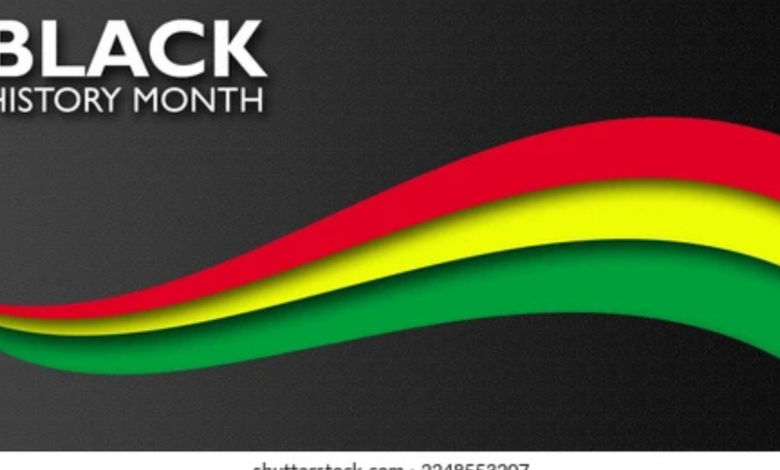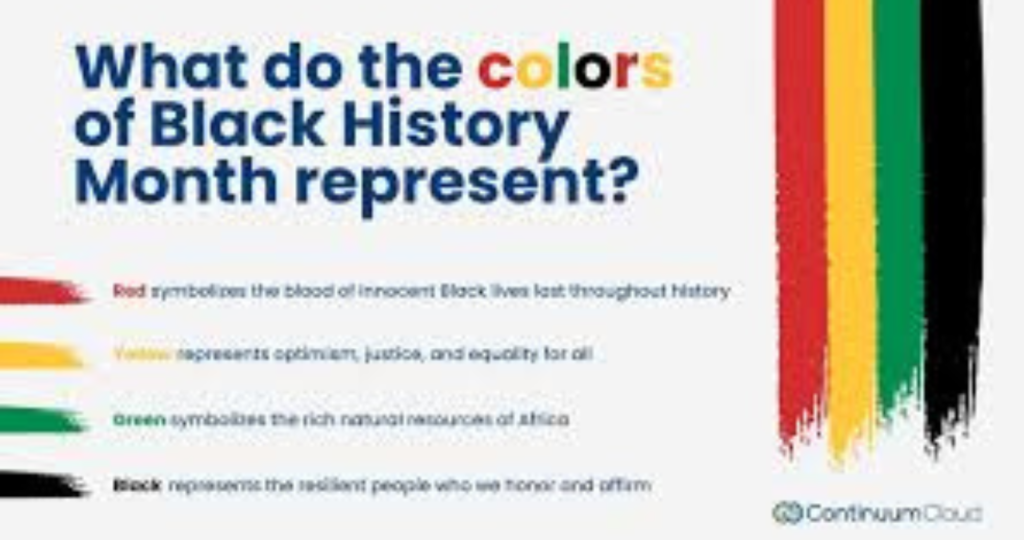Black History Month Colors: What Red, Black, and Green Represent

black history month colors is a time to celebrate the achievements, contributions, and rich cultural heritage of African Americans. While the month itself is filled with events, stories, and reflections, one of the most visually striking aspects of this celebration is its iconic colors: red, black, and green. These colors are more than just a palette—they are deeply symbolic, representing the struggles, resilience, and pride of the African diaspora.
In this article, we’ll explore the origins, meanings, and significance of the Black History Month colors. We’ll also delve into how these colors are used today to honor African American history and culture. By the end, you’ll have a deeper understanding of why red, black, and green are so important to this annual celebration.
The Origins of the Black History Month Colors
The black history month colors, and green are deeply rooted in the history of the African diaspora. They were officially adopted as the Pan-African colors by the Universal Negro Improvement Association and African Communities League (UNIA-ACL), an organization founded by Marcus Garvey in 1914. Garvey, a Jamaican-born activist, and leader, sought to unite people of African descent worldwide and promote pride in their heritage.
In 1920, during the UNIA’s first International Convention of the Negro Peoples of the World, the colors were formally introduced as part of the Pan-African flag, also known as the Black Liberation Flag. This flag was designed to symbolize the unity and strength of African people, both on the continent and in the diaspora.
The Meaning Behind the Colors
Each of the three colors—red, black, and green—carries its unique symbolism, reflecting the shared history and aspirations of African Americans.
1. Red: The Blood That Unites
Red represents the blood shed by African ancestors during centuries of struggle, including the transatlantic slave trade, colonization, and the fight for civil rights. It is a reminder of the sacrifices made by those who fought for freedom and equality.
- Symbolism: Sacrifice, resilience, and the shared bloodline that connects people of African descent.
- Cultural Significance: Red is often associated with life, vitality, and the enduring spirit of the African people.
2. Black: The People
Black symbolizes the people of African descent—their skin, their identity, and their collective strength. It is a celebration of Blackness and a rejection of the negative stereotypes and prejudices that have been imposed on African Americans throughout black history month colors.
- Symbolism: Identity, pride, and the beauty of Black culture.
- Cultural Significance: Black represents the unity and solidarity of the African diaspora, emphasizing the importance of standing together in the face of adversity.
3. Green: The Land and Prosperity
Green represents the fertile land of Africa, the homeland of the African diaspora. It also symbolizes growth, hope, and the promise of a brighter future.
- Symbolism: The natural wealth of Africa, renewal, and the aspirations of African Americans for prosperity and freedom.
- Cultural Significance: Green is a reminder of the connection to Africa and the potential for growth and success in the future.
How the Colors Are Used Today
The red, black, and green colors are prominently displayed during black history month colors and other cultural celebrations. They can be seen in:
- Flags and Banners: The Pan-African flag is often flown at events, parades, and gatherings to honor African heritage.
- Clothing and Accessories: Many people wear clothing, jewelry, or accessories in these colors to show pride and solidarity.
- Art and Decorations: The colors are used in artwork, posters, and decorations to celebrate Black culture and history.
- Educational Materials: Schools and organizations often incorporate these colors into their Black History Month programs and materials.
The Legacy of the Pan-African Colors
The red, black, and green colors have become a powerful symbol of African American identity and pride. They serve as a reminder of the struggles and triumphs of the past, while also inspiring hope for the future.
These colors are not just limited to Black History Month—they are used year-round to celebrate African heritage and promote unity among people of African descent. From the Civil Rights Movement to modern-day activism, the Pan-African colors continue to play a significant role in the fight for equality and justice.

Why the Black History Month Colors Matter
The colors red, black, and green are more than just a visual representation of black history month colors—they are a testament to the resilience, strength, and beauty of African American culture. They remind us of the sacrifices made by previous generations and the ongoing struggle for equality and justice.
By understanding the meaning behind these colors, we can gain a deeper appreciation for the rich history and cultural heritage they represent. They serve as a call to action, encouraging us to honor the past, celebrate the present, and work toward a brighter future.
5 FAQs About Black History Month Colors
1. What do the colors red, black, and green represent in black history month colors?
The colors symbolize the blood shed by African ancestors (red), the people of African descent (black), and the fertile land of Africa and hope for the future (green).
2. Who created the Pan-African flag?
The Pan-African flag was created by Marcus Garvey and the Universal Negro Improvement Association (UNIA) in 1920.
3. Why are the Pan-African colors important?
These colors represent unity, pride, and the shared history of people of African descent worldwide. They are a symbol of resilience and cultural identity.
4. How are the Black History Month colors used today?
The colors are used in flags, clothing, art, decorations, and educational materials to celebrate African heritage and promote cultural pride.
5. Are the Pan-African colors used outside of Black History Month?
Yes, these colors are used year-round to celebrate African culture and heritage, as well as in activism and movements for equality and justice.
Conclusion
The colors red, black, and green are a powerful and enduring symbol of African American history and culture. They remind us of the struggles and sacrifices of the past, while also celebrating the strength, resilience, and beauty of the African diaspora.
As we celebrate black history month colors, let us take a moment to reflect on the meaning behind these colors and the legacy they represent. By honoring the past and embracing the future, we can continue to build a world that values diversity, equality, and justice for all.
You May Also Read: https://usasmartnews.com





